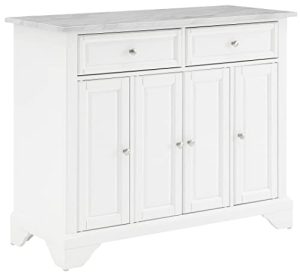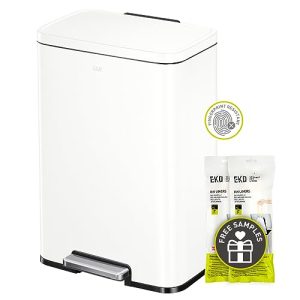Are you ready to make your kitchen tasks faster and more fun? Using a blender can change the way you prepare meals and drinks, saving you time and effort.
Whether you want to whip up a smoothie, create a creamy soup, or chop ingredients quickly, knowing how to use your blender right is key. You’ll discover simple steps and smart tips to get the most out of your blender every single time.
Keep reading, and you’ll soon feel confident turning your blender into your kitchen’s best helper.
Choosing The Right Blender
Choosing the right blender is important for smooth kitchen work. The right blender saves time and makes food preparation easier. Different blenders suit different tasks. Understanding your needs helps pick the best one.
Types Of Blenders
Blenders come in many types. Countertop blenders are common and powerful. They handle smoothies, soups, and sauces well. Personal blenders are small and easy to use. They are perfect for single servings and quick blends. Immersion blenders are handheld and fit in pots. They blend soups or sauces directly in the pot.
Power And Speed Settings
Power affects what a blender can handle. High power blenders crush ice and tough ingredients easily. Speed settings give control over texture. Multiple speeds help blend gently or quickly. Look for blenders with at least three speed options. Pulse function is useful for chunky or precise blending.
Capacity And Size
Capacity matters based on your kitchen needs. Small blenders hold about 20 ounces, good for personal use. Larger blenders hold up to 64 ounces or more. They work well for families or batch cooking. Size affects storage. Choose a blender that fits your kitchen space.
Essential Blender Accessories
Having the right blender accessories can make a huge difference in how you use your blender in the kitchen. These tools not only increase the versatility of your blender but also make your cooking process smoother and faster. Let’s look at some essential accessories that can help you get the most out of your blender.
Blade Attachments
Blade attachments are the heart of any blender. Different blades serve different purposes, such as chopping, pureeing, or crushing ice.
Consider getting a set that includes:
- Standard blades for smoothies and purees
- Ice-crushing blades for frozen drinks
- Specialty blades for grinding nuts or making sauces
Choosing the right blade can save you time and improve texture. Have you noticed how a dull blade makes blending uneven? Keeping your blades sharp is essential for consistent results.
Jars And Containers
Blender jars come in various sizes and materials, which can affect your blending experience.
Think about what you usually blend:
- Small jars for single servings or dressings
- Large jars for soups and big batches of smoothies
- Glass jars for durability and easy cleaning
- Plastic jars that are lightweight and less likely to break
Having multiple jars can make meal prep easier and reduce the need to stop and clean mid-task. What type of jar would best fit your kitchen routine?
Cleaning Tools
Cleaning your blender quickly keeps it ready for your next recipe and prolongs its life.
Invest in tools like:
- Brushes designed to reach tricky corners
- Sponges that won’t scratch your jars
- Cleaning tablets or solutions to remove stubborn residues
I found that a simple brush with a long handle makes cleaning much easier, especially around the blades. How often do you clean your blender after use? Quick cleaning can prevent buildup and keep flavors fresh.
Prepping Ingredients For Blending
Getting your ingredients ready before blending can make a huge difference in both the texture and flavor of your final dish. Proper prepping ensures that your blender works efficiently without overloading the motor or leaving chunks behind. It’s about making your blending experience smoother and your recipes tastier.
Cutting And Chopping Tips
Cut your ingredients into smaller, uniform pieces to help your blender process them evenly. Large chunks can strain the motor and result in uneven blending. For example, chopping carrots or apples into 1-inch pieces helps the blades move through quickly and smoothly.
Think about the shape too—flat surfaces allow better blade contact. Avoid irregular shapes that might get stuck or create air pockets. This small step can save you time and prevent frustrating motor stalls.
Soaking And Softening
Hard or dried ingredients like nuts, beans, or grains often need soaking to soften before blending. Soaking reduces blending time and improves texture, making your smoothies or sauces silkier. Have you ever tried blending dry almonds without soaking? It’s tough on your blender and leaves gritty bits.
Soft fruits and cooked vegetables usually don’t need soaking but adding a little liquid can help achieve the right consistency. If you’re blending something fibrous, like kale, try steaming it briefly to soften the fibers for a smoother blend.
Measuring Ingredients
Accurate measuring keeps your recipe balanced and prevents your blender from getting overwhelmed. Too many solids without enough liquid can jam the blades and create uneven blends. Use measuring cups or a kitchen scale to keep proportions just right.
Sometimes, small tweaks in measurements can change your blend’s texture completely. Have you noticed how just a little extra water can turn a thick smoothie into a drinkable shake? Keep experimenting with amounts to find what works best for your blender and your taste.
Blending Techniques For Different Recipes
Blending is more than just throwing ingredients into a blender and pressing a button. Different recipes need different techniques to get the best texture and flavor. Knowing how to adjust your blending approach can make your dishes stand out and save you time in the kitchen.
Smoothies And Shakes
Start with softer ingredients like bananas or yogurt at the bottom for smoother blending. Add harder items like frozen fruits or ice cubes last to avoid overloading the blades.
Pulse a few times before blending continuously to break down large chunks. This prevents the motor from straining and helps achieve a creamy texture.
Think about the thickness you want. More liquid makes it easier to blend, but less liquid means a richer shake. You can adjust by adding water, milk, or juice gradually.
Soups And Sauces
Use your blender to create smooth soups by blending hot ingredients in small batches. Let the soup cool slightly to avoid pressure buildup inside the blender.
For sauces, start blending at a low speed and increase gradually. This technique helps emulsify ingredients like oil and vinegar without splattering.
Want a chunkier sauce? Blend briefly, then stir in unblended pieces for added texture. This approach works great for salsa or chunky pasta sauce.
Dips And Spreads
Blending dips like hummus or guacamole requires scraping the sides often. This ensures everything gets evenly mixed without overblending.
Try adding ingredients in stages—start with base ingredients like beans or avocado, then add spices and liquids slowly. It helps control consistency and taste.
If your dip is too thick, add a little olive oil or water while blending. This keeps the texture smooth without making it runny.
Maximizing Blender Efficiency
Getting the most out of your blender means more than just turning it on and pouring ingredients inside. Efficiency in blending saves time, improves texture, and even prolongs the life of your appliance. Let’s look at some smart habits that can help you blend like a pro and avoid common pitfalls.
Layering Ingredients Correctly
Have you ever wondered why your smoothie ends up with chunks or why the blender struggles to start? How you place your ingredients makes a big difference.
- Start with liquids:Adding water, juice, or milk first helps the blades spin smoothly and creates a vortex that pulls other ingredients down.
- Add soft items next:Yogurt, bananas, or avocado blend easily and help create a creamy base.
- Put harder or frozen ingredients last:Ice, nuts, or frozen fruits should go on top so the blades can chop them more effectively.
By layering this way, you reduce the chance of the blender jamming and get a consistent texture faster.
Pulse Vs Continuous Blending
Do you know when to use the pulse function instead of just blending continuously? This small choice can save your blender from unnecessary strain.
- Pulse for chunk control:Use short bursts to break down tough ingredients without turning them into mush.
- Continuous blending for smooth textures:Once ingredients are roughly chopped, switch to continuous to get that silky finish.
Try pulsing nuts or herbs first to avoid over-processing. It’s like giving your blender a chance to catch its breath.
Avoiding Overheating
Have you ever noticed your blender’s motor getting hot or smelling burnt? Overheating can damage your appliance and ruin your recipe.
- Don’t run the blender too long:Most blenders aren’t meant to run continuously for more than 30 seconds to a minute.
- Give it breaks:Pause for 30 seconds between blending cycles to cool down the motor.
- Cut ingredients smaller:Smaller pieces blend faster and reduce motor load.
Taking care of your blender this way ensures it stays powerful and ready whenever you need it.
Safety Tips For Blender Use
Always keep the blender lid secure before turning it on to avoid spills. Unplug the blender before cleaning or handling the blades for safety. Use the blender on a flat surface to prevent it from tipping over during use.
Using a blender in the kitchen can make meal prep a breeze, but safety should always be a top priority. Whether you’re blending a morning smoothie or pureeing soup, following basic safety tips can prevent accidents and ensure a smooth culinary experience. Let’s delve into some essential safety practices every home chef should know.Handling Blades Safely
Blender blades are sharp and can cause serious injury if not handled properly. Always ensure the blender is unplugged before touching the blades. Use a spatula, not your fingers, to remove food caught around the blades. Ensure the lid is securely fastened before turning on the blender, as this keeps the blades safely contained. If your blender comes with a detachable blade, handle it with caution during cleaning. Dry the blade thoroughly to prevent rust and ensure its longevity.Preventing Spills And Splashes
Spills and splashes can lead to mess and potential burns, especially when blending hot liquids. To minimize this risk, never fill your blender beyond the maximum fill line. Start blending at a low speed and gradually increase to prevent sudden spurts. When blending hot liquids, allow them to cool slightly before blending and use a towel to hold the lid in place. This creates a safer environment by absorbing any escaping steam. Are you aware that sudden movements can lead to spills? Always place your blender on a stable surface to keep it steady during use.Proper Storage
Storing your blender correctly is crucial for maintaining its functionality and safety. Disassemble the parts after cleaning to ensure they dry completely before storing. This prevents mold and odor buildup, keeping your kitchen fresh. Choose a storage place away from the edge of counters where it could be accidentally knocked off. Consider using a dedicated space or shelf to keep all the parts together, making it easy to find and assemble next time you need it. How often do you inspect your kitchen gadgets? Regularly check for any wear and tear to prevent future mishaps. By practicing these safety tips, you can enjoy the benefits of your blender while keeping your kitchen a safe space.Cleaning And Maintenance
Keeping your blender clean and well-maintained is key to enjoying its full potential and extending its life. Neglecting this can lead to unwanted odors, poor performance, or even damage. Let’s dive into easy ways to keep your blender sparkling and running smoothly.
Quick Cleaning Hacks
After making a smoothie or sauce, rinse the blender jar immediately. This stops food from sticking and makes cleaning easier later.
Fill the jar halfway with warm water, add a drop of dish soap, and blend on high for 30 seconds. This simple trick cleans hard-to-reach spots without disassembling the blender.
Use a soft sponge or brush to wipe the lid and base. Avoid harsh scrubbing to protect the blender’s finish.
Deep Cleaning Methods
For stubborn stains or smells, soak the jar in a mixture of baking soda and warm water for 15 minutes. Baking soda neutralizes odors and loosens residue effectively.
Remove the blade assembly carefully and scrub it with a toothbrush dipped in vinegar. This helps remove grime and prevents rust.
Make sure all parts are completely dry before reassembling to avoid mold growth inside the blender.
Maintaining Blender Longevity
Don’t overload your blender—stick to the recommended maximum capacity to prevent motor strain. Overworking your machine can shorten its lifespan.
Always unplug the blender before cleaning or maintenance to stay safe. This simple habit protects both you and the appliance.
Check the seals and gaskets regularly for cracks or wear. Replacing these parts promptly keeps your blender leak-free and functioning well.
Have you noticed your blender slowing down or making unusual noises? Address these signs early to avoid costly repairs or replacements.
Creative Blender Recipes
Using a blender in your kitchen opens up a world of creative possibilities that go beyond just smoothies. It can save you time, add nutrition, and even make your meals more enjoyable. Whether you want to start your day with a power-packed breakfast or treat yourself with a quick dessert, the blender is your versatile helper.
Healthy Breakfast Ideas
Blenders make it easy to whip up quick and nutritious breakfasts. Try blending spinach, banana, and almond milk for a green smoothie that fuels your morning.
You can also blend oats, Greek yogurt, berries, and a touch of honey to create a creamy, protein-rich smoothie bowl. Top it with nuts or seeds for extra crunch and energy.
Have you ever tried making homemade pancake batter in your blender? It’s fast and mess-free—just blend eggs, flour, milk, and a little baking powder. Pour straight onto the griddle and enjoy!
Easy Meal Prep Solutions
Blenders can speed up your meal prep with minimal effort. Puree cooked vegetables like carrots or squash to make smooth soups that freeze well and reheat quickly.
Use your blender to make sauces and dressings in bulk. A homemade pesto or tahini dressing can transform simple salads or roasted vegetables.
Another practical idea is blending chickpeas, garlic, lemon juice, and olive oil for a quick hummus. It’s perfect for snacks or as a spread during the week.
Desserts And Treats
Your blender can also satisfy your sweet tooth without complicated steps. Blend frozen bananas with cocoa powder for an instant, creamy chocolate ice cream.
Try mixing cream cheese, berries, and a little sugar for a smooth cheesecake filling that you can pour into molds or jars.
Have you experimented with homemade nut butters? Blend roasted nuts slowly until smooth—perfect for topping toast or adding to smoothies.
Frequently Asked Questions
What Are The Basic Steps To Use A Blender In Kitchen?
Start by assembling the blender correctly. Add ingredients, secure the lid, select the speed, and blend until smooth. Always follow the recipe and clean the blender after use for best results.
Can I Use A Blender For Hot Soups?
Yes, many blenders handle hot liquids safely. Allow soups to cool slightly, blend in batches, and avoid overfilling to prevent spills and burns.
How Do I Clean My Blender Efficiently?
Rinse the jar immediately after use. Add warm water and dish soap, blend briefly, then rinse thoroughly. Wipe the base with a damp cloth for a complete clean.
What Ingredients Can I Blend In The Kitchen?
You can blend fruits, vegetables, nuts, seeds, and liquids. Blenders are versatile for smoothies, sauces, soups, and purees, enhancing your cooking options.
Conclusion
Blenders make cooking faster and easier in any kitchen. They help mix, chop, and blend ingredients smoothly. Use them for smoothies, soups, sauces, and more. Clean your blender right after use to keep it working well. With practice, you will find many ways to use it daily.
Enjoy creating fresh, tasty meals with just one tool. Simple steps lead to great results every time. Try new recipes and have fun in your kitchen!

Sophie Hartwell is the founder of KitchenQuik.com, where she shares kitchen tips, smart cooking hacks, and the best product picks to make everyday cooking easier and more enjoyable.




